Soon enough EEVBlog Metrology section will be all flooded with 3458A's...
Well, having sour taste of my own
#2 3458A I decided than third one would have a better outcome, right!
No, did not rob the bank to buy yet another unit. Instead this unit came to me by it's own will. It was a destiny

.
Long story short, someone local (sorta, still another city 150km away) in Taiwan found my website, and decided to try luck with getting me to fix it.
Best part - is that neither I speak chinese, nor the owner speaks english, or ukrainian, or russian, which are the only languages I know

. With help of 3rd party we get things sorted out and I agreed to look on their sick box, in favour to have visit to their lab on some weekend to attempt a calibration of my 4920M.

Let's cut the theory, and go right to the ER on this one.

If you not familiar what is 3458A, I strongly recommend reading my unit one
worklog Initial photos and conditions
No cracks or dents, unlike my own 2nd unit this time. It's an old meter, still wearing old HP logo, so it's manufactured before HP T&M division separated into Agilent in 1999.

Just a bit dusty and dirty, but nothing too bad either. Label does not reveal any options, but actually unit itself reports Opt 001 present (extra memory). There is still non-damaged calibration sticker from Agilent on bezel, so it's a good sign. Meaning, good chance that nobody tried to fix sensitive boards without having proper qualification. It's obviously serviced by Agilent some time ago.
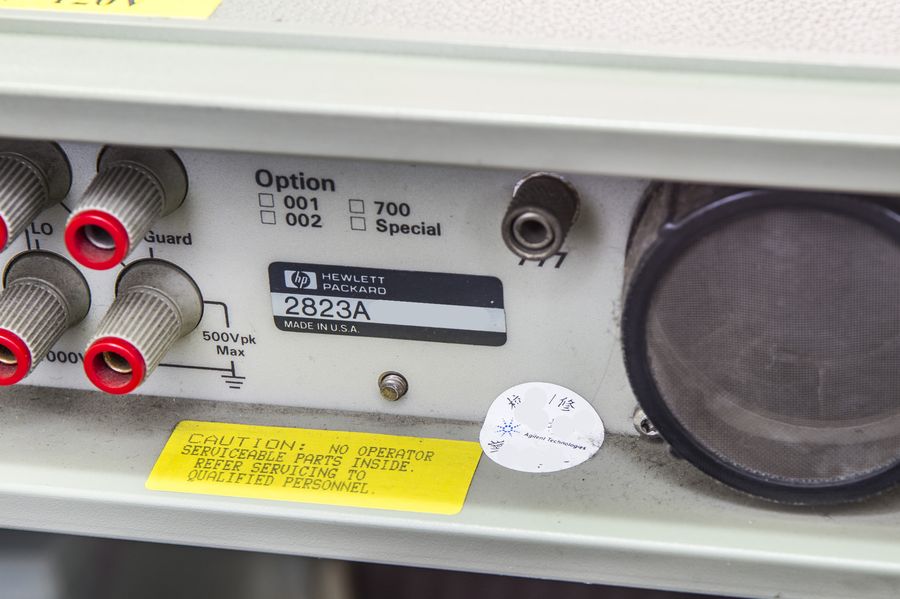
Serial is hidden for "just in case" reason, but it's 04xxx, much older than my first box.
 Day one: Power checks and initial diagnostics
Day one: Power checks and initial diagnosticsAfter check of correct mains voltage selector switches (this is important, and can cause $337 USD minimum repair if unit plugged into 220VAC mains on 110VAC setting!

), let's power unit up and check base measurement function.
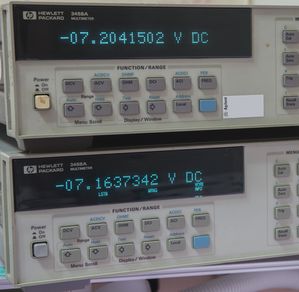
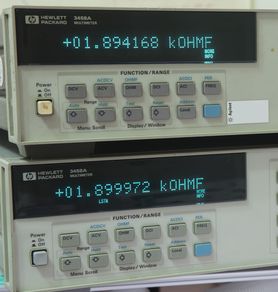
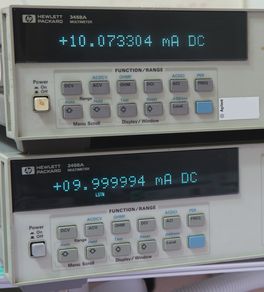
Uh-oh. Test result shows it's 0.7% meter, not the 0.0008% one! Sick-sick poor meter.
| Voltage rail | Expected | Measured | Error Spec(1y) |
| 7V +/-0.5ppm | -7.1637342 VDC | -7.2041502 VDC | +5641.7 ppm +/- 8 ppm |
| 1.9 kOHM +/-8ppm | 1899.972 kOHM | +1894.168 kOHM | -3054.8 ppm +/- 10 ppm |
| 10 mADC, +/-10ppm | +9.999994 mADC | +10.073304 mADC | +7331.0 ppm +/- 20 ppm |
Clear indication of failure, as even 20 year old unit with only factory calibration cannot drift so much off the spec. And it's indeed faulty, due to self-test failed as well on AC stage, giving error
Flatness DAC Convergence : 198 which is test for 10V ACV range/function. Later after ACAL ALL attempt unit stopped operation with
202 HARDWARE FAILURE: SLAVE TEST - AC BOARD error message. It hints that A2 AC PCBA is faulty.
Additional confirmation is also incorrect reading on ACV, ~18.xxx VAC on 100VAC range and ~187.xxx VAC on 1kVAC range. There was no reaction or reading change on either short or open at input terminals.
Time to remove the covers and check boards for any obvious and visible component damages.
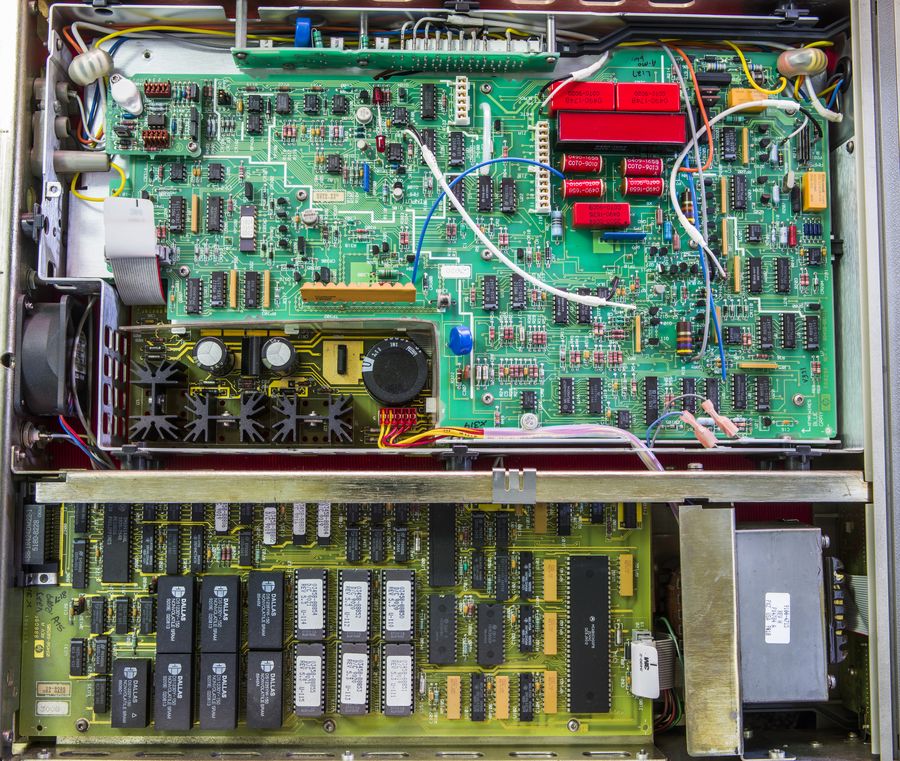
All boards visible on this side are original, with manufacturing date codes from year 1989-1990. It's even older than my own first HP 3458A. A9 DC reference module board is standard
8ppm/year model P/N 03458-66509, as expected.
A1 DC board is older Rev.C with weird and strange construction with two red 5mm LEDs hanging back to back on CR108 position. This position is supposed to be populated with 3V Zener diode, just like in newer A1s.
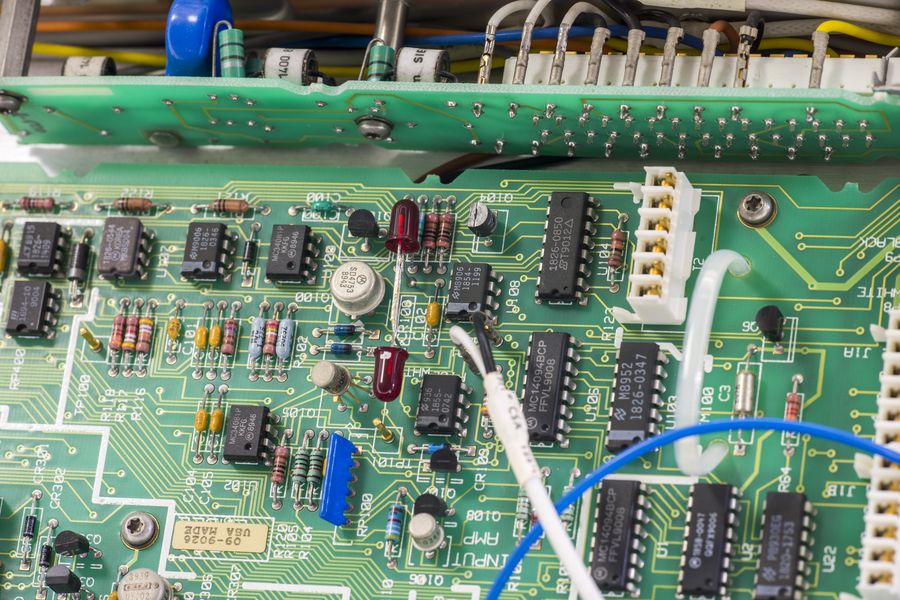
Perhaps HP factory ran out of 3V zeners and needed this unit built for customer, pronto?

I'm sure
Dr.Frank or
Kleinstein know the correct answer to this!
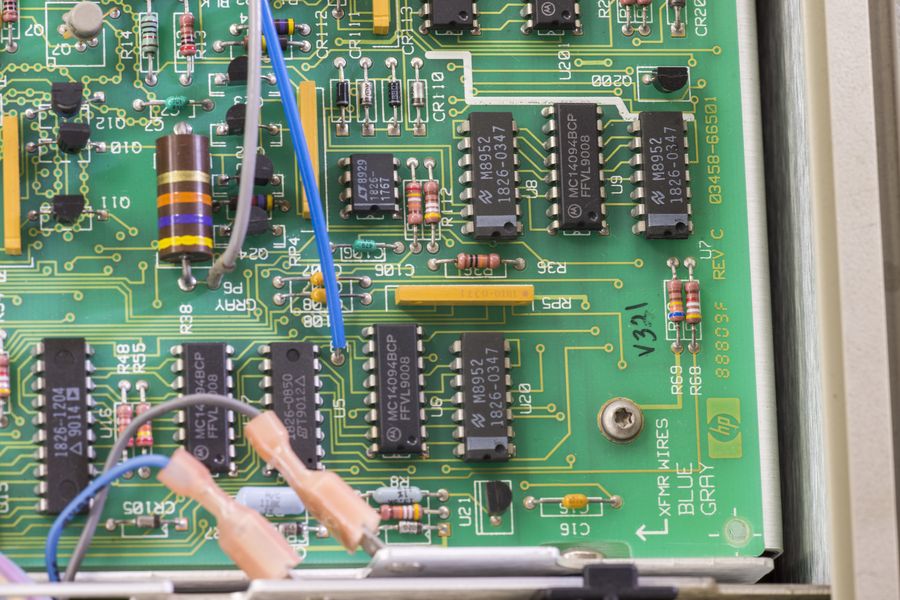
Also there is no Q102 on Rev.C A1 board either. Reference 40 kOHM resistor is hermetic Vishay Precision Group part with custom part number.
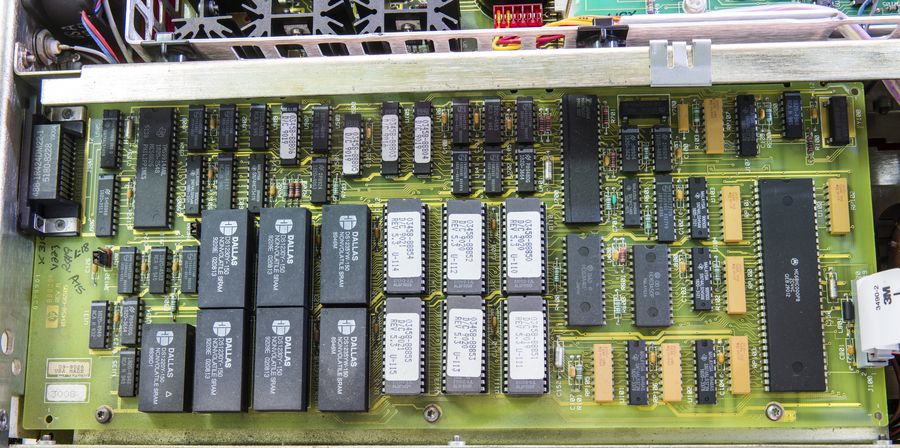
This is old A5 outguard controller board, same as one in my first 3458A with EDIP-packaged NVRAMs. Firmware is stored in six UV-erasable EPROMs 27C512, revision 5.3 from week 20 year 1990. We can update it with help of UV-lamp and usual ROM-programmer, such as cheap TL866CS.
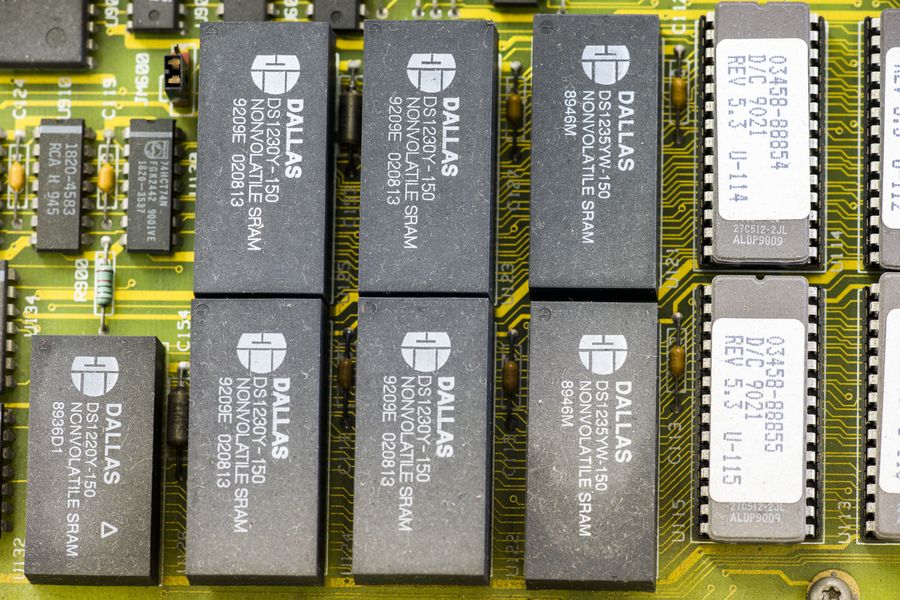
Hard to believe, but these 27-year old Dallas chips are still alive! Let's not play with time and replace them quickly

Also board can enjoy little bit of cleaning from dust and rust.
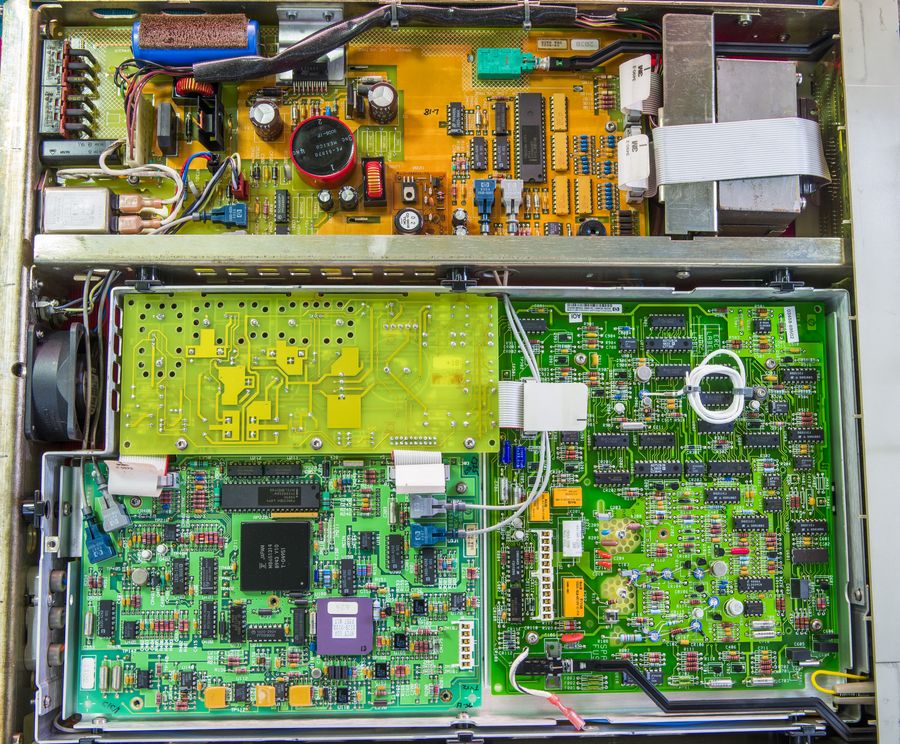
Schaffner dated 1984! Need to replace this EMI filter, if we want to ensure safe and long operation of the unit. These filters are prone to fail and burn if you get "lucky" with bad batch.
I will also replace those capacitors on the A6 power supply board, just to be on safe side. 27 years is not a small duration even for best top tier capacitors.
ADC board is old version as well, with different arrangement around oscillator package.
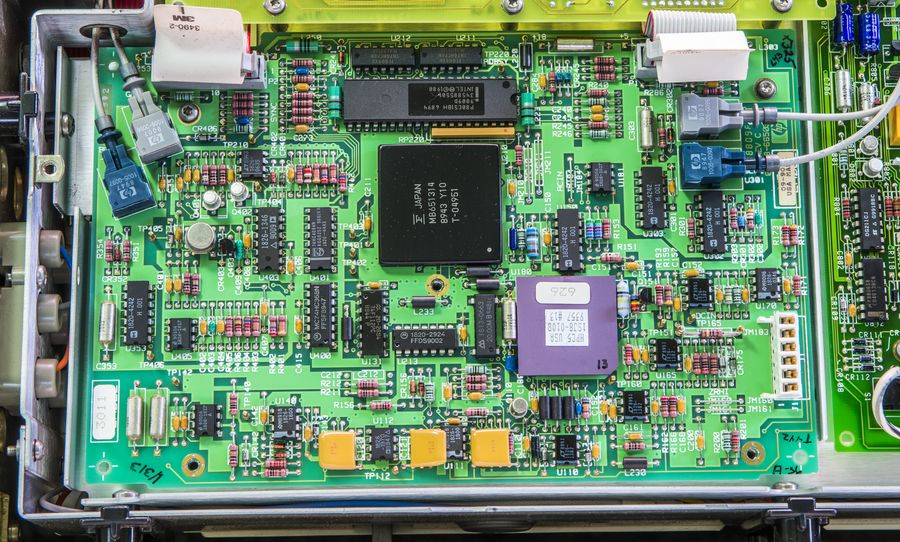
This is older 03458-66503 Rev.C board, with bit different layout than newer A/D boards. This is the board which matches original drawing and schematics of public
HP 3458A Component-Level Information Package document with schematics. It also has U213 populated, but already late enough to feature two tantalum caps near ERC tag location.
Famous hybrid ASIC U180 marked as
HPC5 USA 1808-0108. Let's hope it does not have drift or convergence issues, or this repair will quickly turn into expensive disaster.
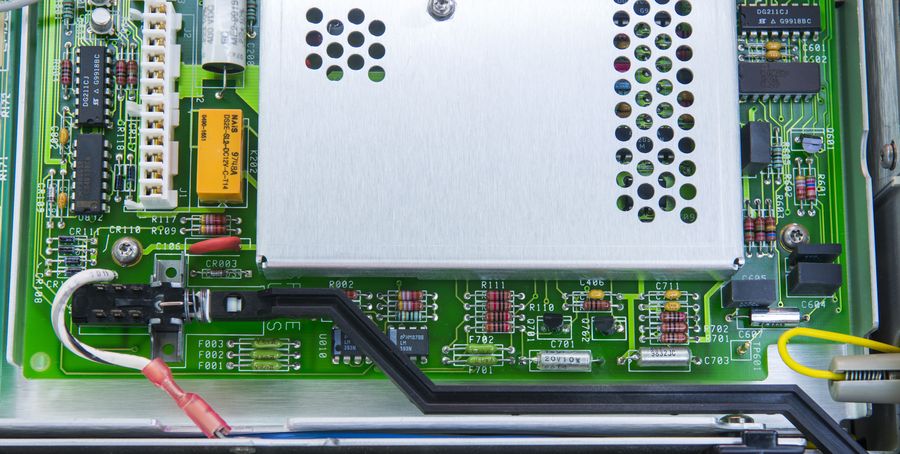
This board was clearly replaced by Agilent service center before, as it has much newer date codes on packages, around 1998-1999 year, and has Agilent service calibration tag. Also it's likely a refurbished before board, there is still solder flux residue around parts F701, C701, C709, C710, Q701, C406, Q908 (J304), Q905, Q904, CR901, Q901 (2N3094).
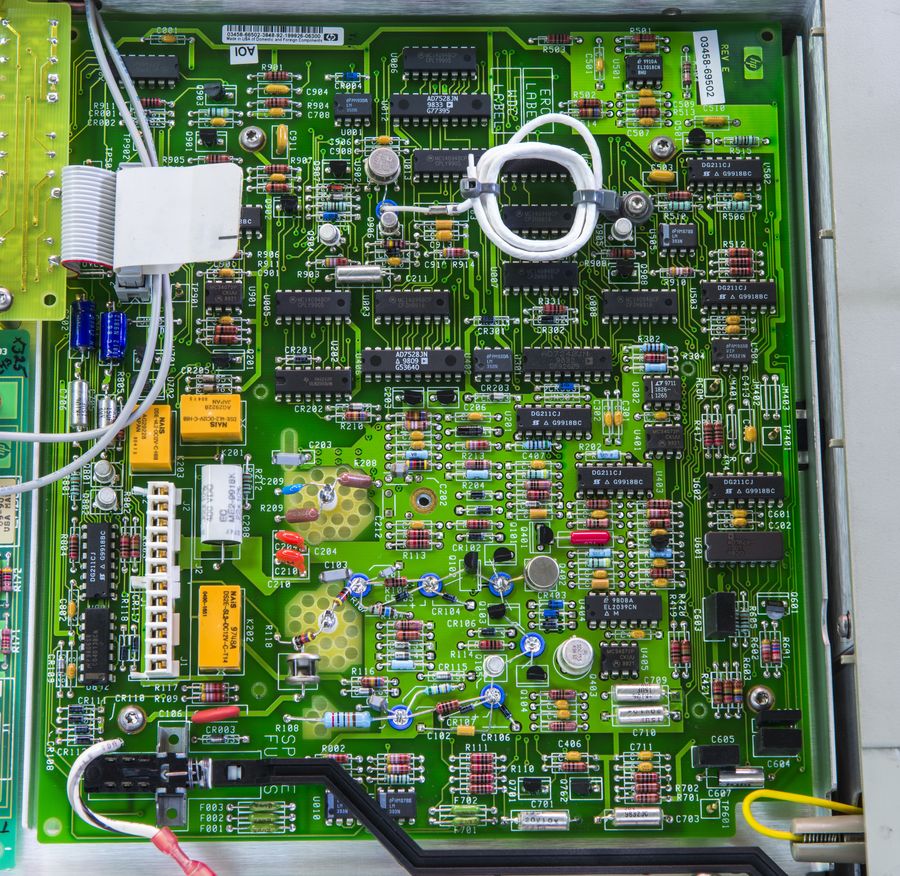
No visible damages observed, but resistance measurement on fuses revealed blown
F701 which is post-regulator fuse on +15V rail. AHA!
Day next: Repair on A2 PCBAProbing around revealed blown fuse
F701.
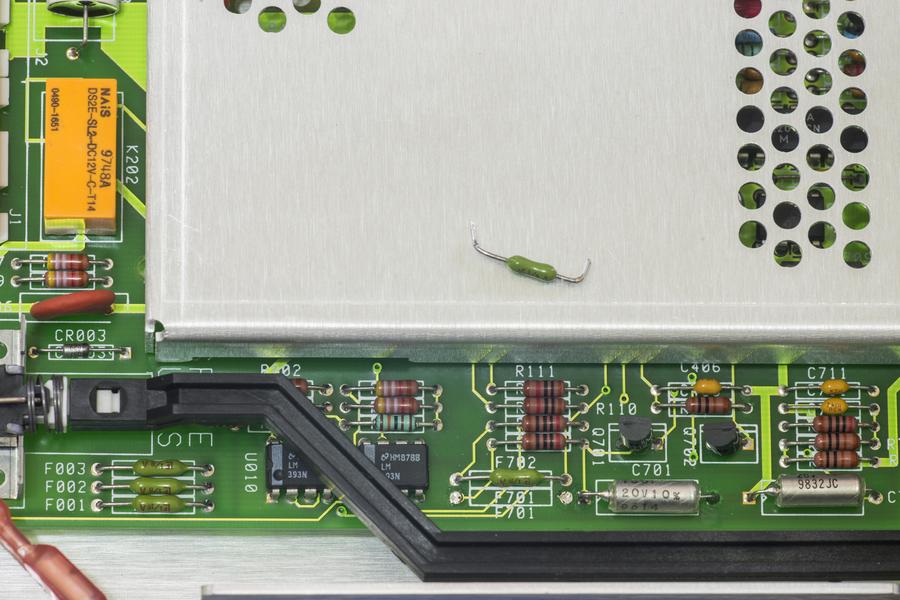
After removal of bad
F701 fuse and suspected
Q701 2N4401 NPN transistor power supply line
+14va was powered from external SMU, set to +14.000VDC with current compliance 100mADC for safety reasons.
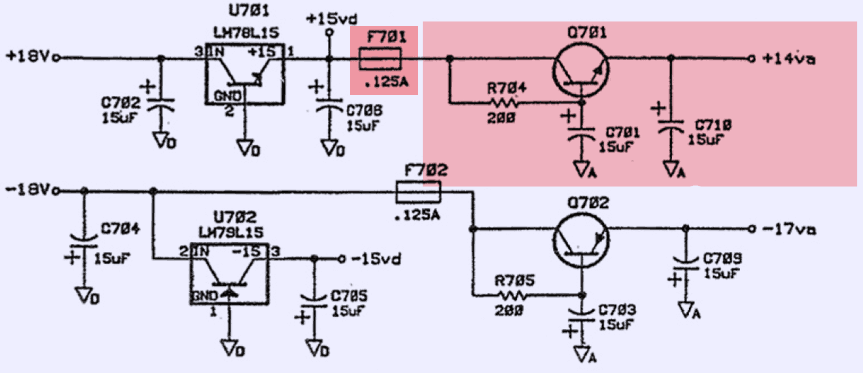
This allowed unit to pass full self-test and successfully complete ACAL self-calibration. Current consumption was stable around +35 mADC, sometimes peaking at +39 mADC during AC range relay switching/operation. At power on during meter init current peaks at 56 mADC.
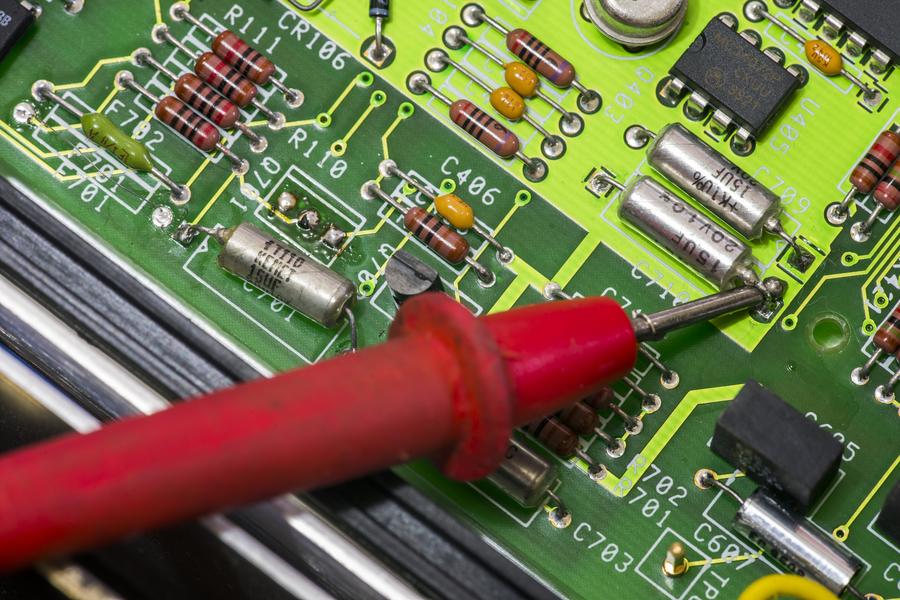
Yes, I know, replacing fuse with jump-wire is bad bad bad, but I had no fuse in this package for a quick test. Guilty!

After 200 OHM resistor test, other parts that got replacement are C701, C710, and Q701 with new NPN. This measure resolved issue with +14va rail and provided stable +14.1..+14.2 VDC on C710. This also fixed error offsets on the DCV/OHMF/DCI functions as well! Too easy to believe!
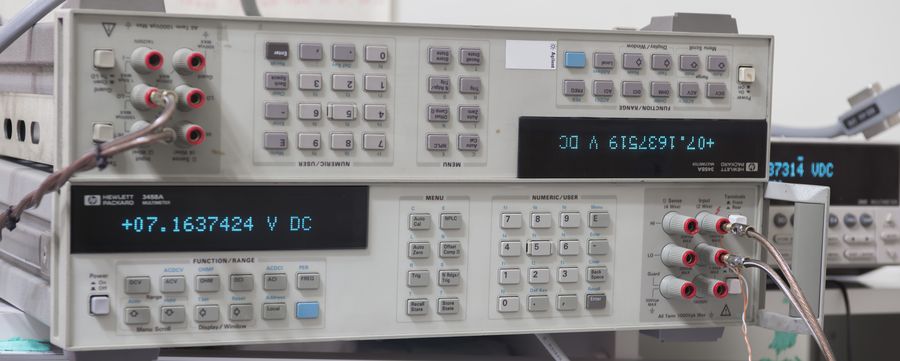
Let's do same test as before, with stable LTZ from fairy-tale thread...

| Voltage rail | Expected | Measured | Error | _. Spec(1y) |
| 7V +/-0.5ppm | +7.1637424 VDC | +7.1637519 VDC | +1.326 ppm | +/- 2.55 ppm |
| Extended test for 7V | +7.1637466 VDC, data | +7.1637324 VDC, data | <2.2 ppm | +/- 2.55 ppm |
Can it be any better? Within specs even after 24 year old calibration?! I even powered on one of my Keithley 2002's to check that it's indeed correct voltage coming out of the reference.
Easy stuff, A5 board updatesNow since analog inguard stuff works, rest of repair is piece of cake, really.
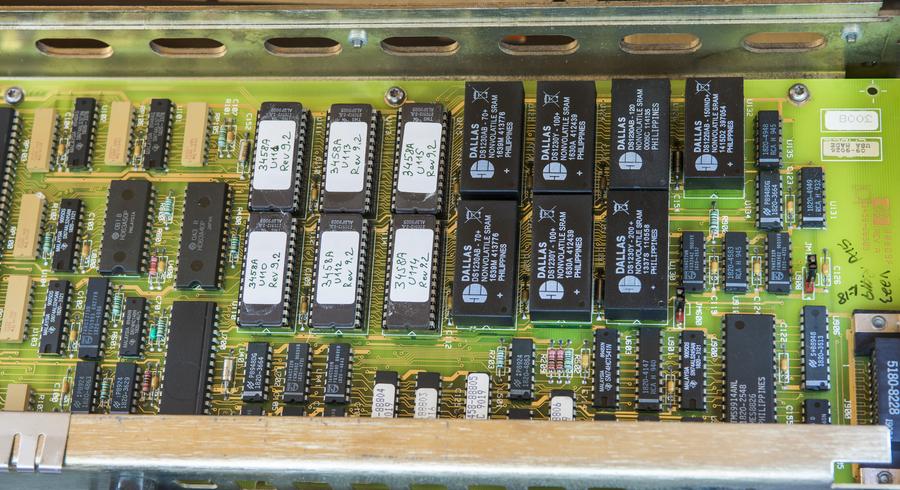
Firmware is Rev 5. Time to update to latest Rev.9. Here is collection of firmware ROM dumps for reference.
Firmware ROM dumps for HP/Agilent/Keysight 3458A, read by general purpose ROM programmer. From information we have, firmware dumps are compatible with all hardware versions.
As it's already 1:35 am here, I couldn't be bothered to convert textile formatting from my site to BB-codes for forum, so for firmware you just go
there, alright?

After reassembly unit powered on just fine, and completed full Self-Test and Acal ALL without issues.



CAL? 1,1 and CAL? 2,1 values presented as well. Not that this has any use for anyone here, but just nice to have good details in article, and I like taking photos



CALSTR? which stores calibration string returns:
Date = Wed Nov 4 07:43:04 1992, Temp('C) = 38.1. This could be deceiving, as CALSTR does not need to be updated after calibration process complete, so it could be just left original from factory calibration. Doesn't mean much. Given test results, meter calibration is likely was happen after 1992, otherwise it would be extremely good result over all these years, which is hard to believe.
Here's unit after 10VDC calibration, reading output of my
modified pimped up HP 3245A. You can see data before calibration around 3pm and after. 0.3ppm difference, I'd call close enough!
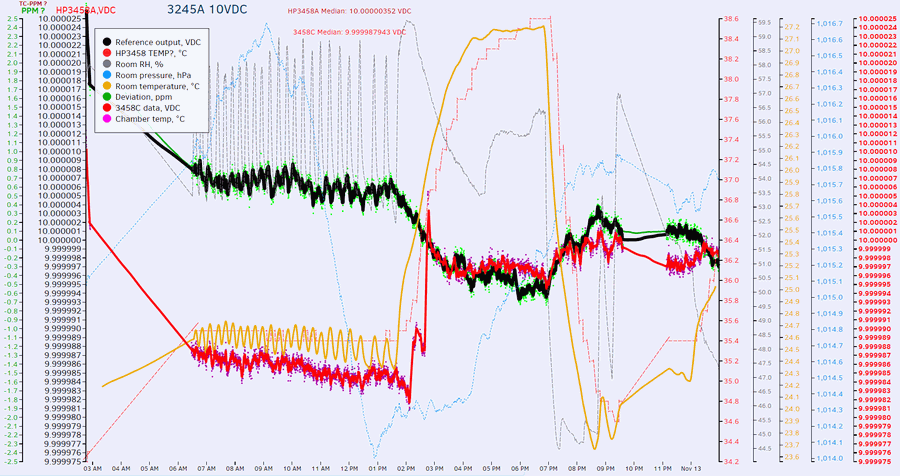
I'll have this box running another week, to make some comparisons to my gear to ensure everything stable and well, and then travel to visit happy owner, together with
Wavetek 4920M, to run some of tests using their lab gear. I heard they have some Fluke toys there....
SummaryThis went very well, and a good difference to both my rusty units from eBay, so there still is a little chance that on lucky day, under lucky moon, in lucky place one of us can buy 3458A in condition and with minor issues like covered here for some reasonable amount of cash. Just keep looking on what are you getting, before trigger evil Buy it now button.
Thanks for reading.

As usual, as end result, I get another
article on my site, yey!